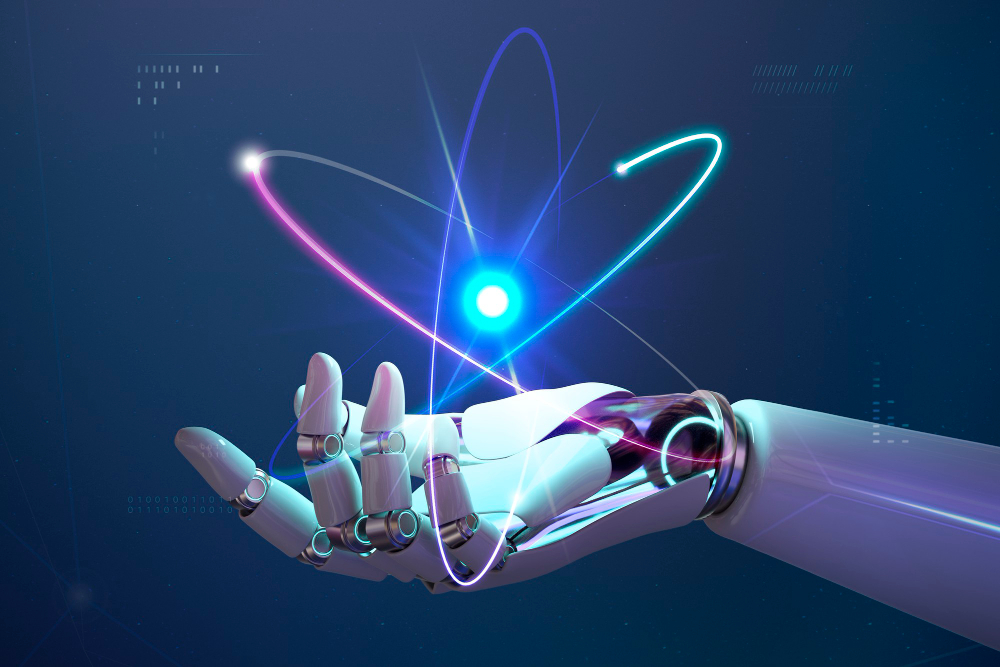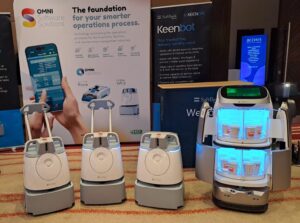Unlocking efficiency and innovation: how robotics is reshaping the business landscape

We are on the cusp of a new age in business, and robotics will undoubtedly play a major part in determining its trajectory. The widespread use of robotics is more than just a technological advance; it also represents a sea change in the way that organisations are run, ushering in previously unimaginable efficiencies and encouraging a culture of creativity.
Robotics has the power to redefine the mundane, turning routine tasks into automated processes and freeing up human capital to engage in more complex, value-driven work. Moreover, the complementary nature of robotics and AI expands the range of possibilities even further by enabling robots to carry out tasks and learn, adapt, and improve over time.
However, the rapid evolution of robotics also raises pressing questions and challenges — ranging from workforce displacement and ethical considerations to regulatory and security issues. Navigating these concerns will be crucial for businesses aiming to leverage robotics and embrace a future that is as prosperous as it is automated.
This article will delve into the profound impacts of robotics on the business landscape, exploring how it improves efficiency, fosters innovation, and catalyses a new wave of operational excellence. It will also confront the challenges associated with increased reliance on robotics and discuss potential mitigation strategies. So, fasten your seat belts as we embark on this exciting journey into the future of business, where robotics stands as a game-changing force, ready to reshape the business world.
The significant role of robotics in shaping the future of business
Maintaining a position that is always one step ahead of one’s rivals in today’s fast-paced and intensely competitive corporate world is essential to achieving success. Robotics is a powerful tool that can help businesses in many ways. Robotics could significantly alter how businesses function, as it has numerous advantages that can boost productivity and creativity.
How robotics is leading to a fundamental shift in business operations
The days are long gone when robots were only used in production lines and factories. They are now being used in a wide variety of other settings. Robotics are already being integrated into every facet of company operations, from customer service and data analysis to logistics and management of supply chains. This extensive use of robotics is not merely a passing fad; rather, it marks a fundamental transformation in the way businesses are run.
Robots are capable of performing repetitive and mundane tasks with precision and consistency. By automating these routine processes, businesses can streamline operations, reduce errors, and save valuable time and resources. This automation leads to increased efficiency and frees up human capital to focus on more complex and value-driven work. Instead of spending hours on repetitive tasks, employees can engage in problem-solving, creativity, and critical thinking, driving innovation within the organisation.
How robotics enhances operational efficiency
One of the most significant advantages of robotics is its ability to enhance operational efficiency. By automating tasks that humans previously performed, businesses can achieve higher levels of productivity and accuracy. Robots are not subject to fatigue or human error, allowing them to work tirelessly and consistently.
Furthermore, robots can operate 24/7, eliminating the need for shift rotations and downtime. This continuous operation translates into faster turnaround times, improved customer satisfaction, and increased output.
Using robotics in decision-making can also lead to more informed and efficient choices. Robots can provide valuable insights and predictions by analysing vast amounts of data and using algorithms. This data-driven decision-making can help businesses optimise processes, identify trends, and make more accurate forecasts. You can discover more about how robotics can help your business decisions by checking out the articles from Electronic Specifier, where you can get the latest electronics engineering news.
Exploration of the symbiotic relationship between robotics and AI
The true power of robotics lies in its integration with artificial intelligence (AI). The combination of robotics and AI opens up a world of possibilities, enabling machines not just to perform tasks but also to learn, adapt, and improve over time.
By leveraging AI, robots can become more intelligent and capable of handling complex tasks. They can analyse data in real time, learn from past experiences, and make autonomous decisions. This ability to learn and adapt makes robots valuable assets in dynamic and rapidly changing business environments.
Furthermore, AI-powered robots can interact with humans more effectively. Natural language processing and machine learning algorithms enable robots to understand human speech, interpret intentions, and respond appropriately. This seamless human-robot interaction enhances collaboration and teamwork, driving innovation within organisations.
The potential challenges posed by widespread adoption of robotics
While the benefits of robotics are undeniable, the rapid evolution and widespread adoption of this technology also raise pressing questions and challenges.
Workforce displacement and job transformation
As businesses embrace robotics and automation, there is a legitimate concern about workforce displacement. Jobs that can be easily automated are at risk of being replaced by robots, leading to potential job losses. This shift in the employment landscape requires businesses to carefully manage the transition and support their workforce through upskilling and reskilling initiatives.
However, it is crucial to note that robotics also creates new job opportunities. As businesses automate routine tasks, they can redirect resources towards more complex and value-driven work that requires human ingenuity and creativity. By embracing this shift, businesses can create a more skilled, adaptable workforce capable of driving innovation.
Ethical considerations
Integrating robotics and AI raises ethical considerations that need to be addressed. For example, using autonomous robots in decision-making can lead to questions about accountability and responsibility. Businesses must ensure their robots are programmed with ethical guidelines and principles to prevent unintended consequences.
Additionally, there are concerns about the impact of robotics on privacy and security. With robots collecting and analysing vast amounts of data, businesses need to implement robust cybersecurity measures to protect sensitive information and prevent unauthorised access.
Regulatory and legal frameworks
As robotics becomes more prevalent in the business landscape, there is a need for regulatory and legal frameworks to address the associated challenges. Governments and regulatory bodies must collaborate with businesses to develop guidelines and standards for robotics’ safe and ethical use.
Furthermore, intellectual property rights and liability issues need to be clarified to ensure fair and responsible use of robotic technologies. This collaborative effort between businesses and regulatory bodies will help create a conducive environment for the widespread adoption of robotics.
Forecasting the future impact of robotics on the business world
The future impact of robotics on the business world is vast and far-reaching. Robots will become even more intelligent, versatile, and integrated into various industries as technology advances. Their impact will extend beyond traditional manufacturing and into areas such as healthcare, agriculture, and transportation.
In the healthcare sector, robots can assist in surgeries, monitor patients, and perform repetitive tasks, allowing healthcare professionals to focus on patient care. In agriculture, robots can automate planting, harvesting, and monitoring crops, improving efficiency and reducing environmental impact. In transportation, autonomous vehicles and drones can revolutionise logistics and delivery services, reducing costs and enhancing speed and accuracy.
The possibilities are endless, and businesses that embrace robotics will be at the forefront of innovation and efficiency. However, to fully capitalise on the potential of robotics, businesses must be proactive in preparing for this future.
How Businesses Can Prepare For And Embrace This Future
Future-proofing your company requires a planned and comprehensive approach to integrating robotics. Here are some key steps businesses can take:
- Assess and identify areas for automation: Conduct a thorough analysis of current processes and identify tasks that can be automated. This will help determine the potential impact of robotics on operations and identify areas for improvement
- Invest in research and development: Stay updated with the latest advancements in robotics technology and invest in research and development to explore new possibilities. Collaborate with universities, startups, and industry experts to drive innovation within the organisation
- Develop a comprehensive robotics strategy: Create a roadmap for robotics integration, outlining short-term and long-term goals. Consider factors such as cost, scalability, and potential risks when developing the strategy
- Invest in human capital: As robotics automates routine tasks, businesses must invest in upskilling and reskilling their workforce to handle more complex and value-driven work. This will ensure a smooth transition and create a workforce that is adaptable and capable of driving innovation
- Collaborate and share best practices: Engage with other businesses and industry leaders to share experiences and best practices. Collaborative efforts can help address challenges, shape regulatory frameworks, and drive the adoption of robotics on a wider scale
By adopting these proactive measures, businesses can position themselves as leaders in the robotics revolution and unlock the full potential of this transformative technology.
Reflection on the significance of robotics in shaping a prosperous, automated future for businesses
The rise of robotics is reshaping the business landscape in unprecedented ways. From enhancing operational efficiency and driving innovation to addressing pressing challenges, robotics offers a myriad of opportunities for businesses to thrive in the digital age.
While the road ahead may present challenges, with careful planning and strategic preparation, businesses can navigate this technological revolution and embrace a prosperous and automated future. By leveraging the power of robotics, businesses can unlock new levels of efficiency, foster a culture of innovation, and position themselves at the forefront of the ever-evolving business landscape. So, fasten your seat belts as we embark on this exciting journey into the future of business, where robotics stands tall as a catalyst for change.






